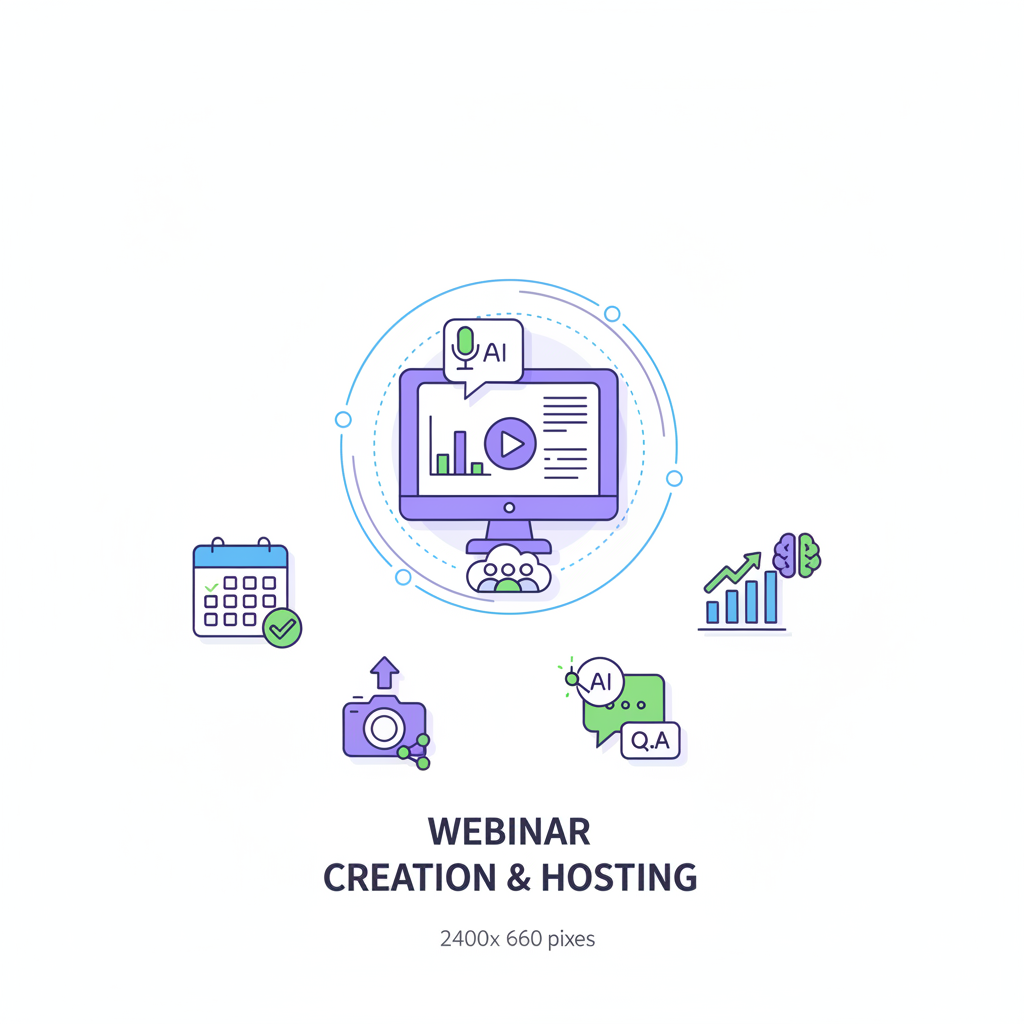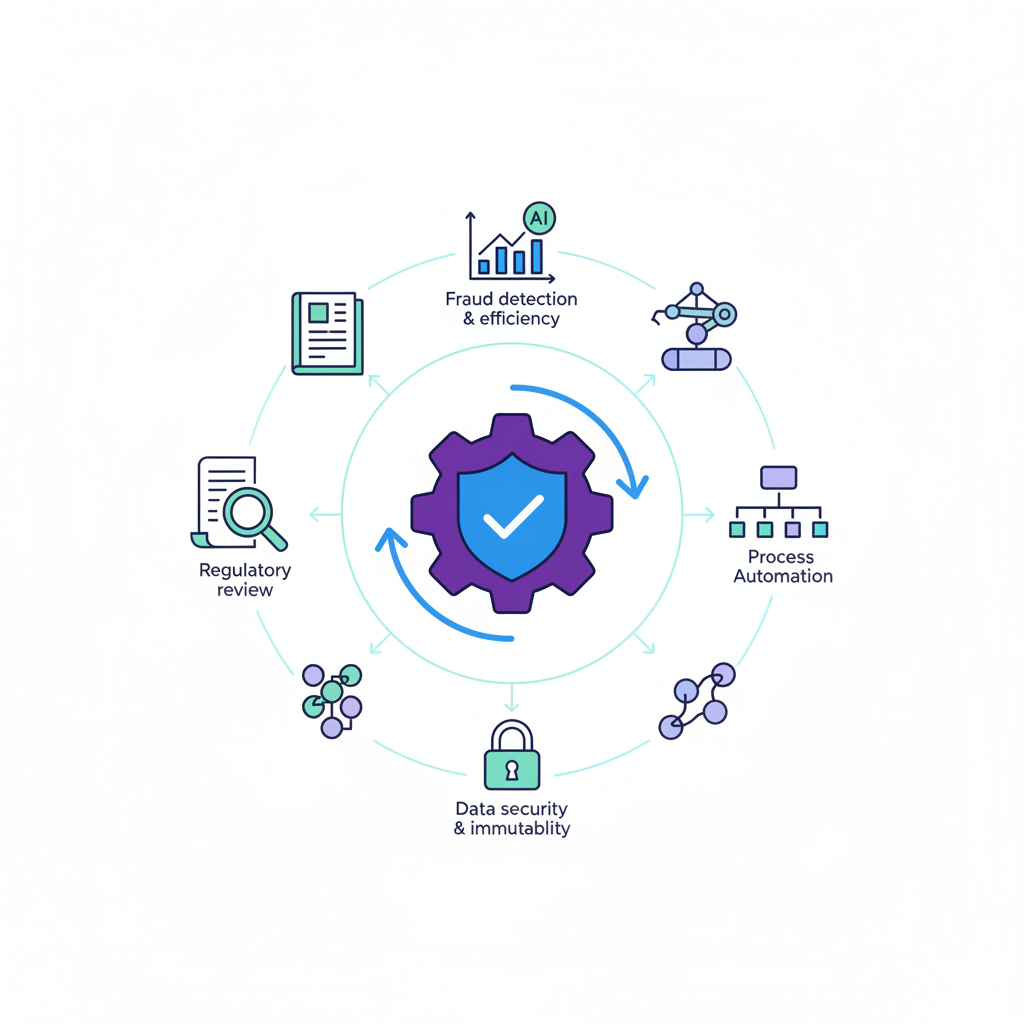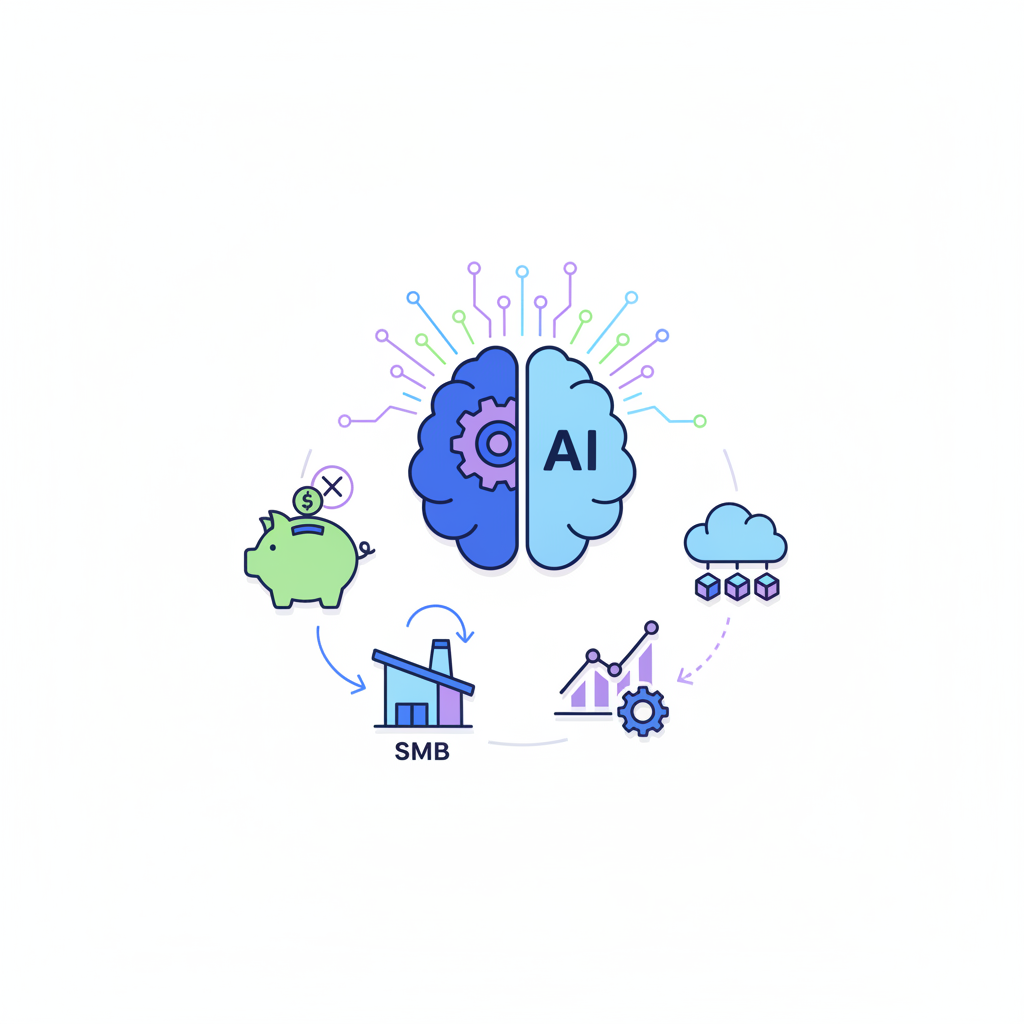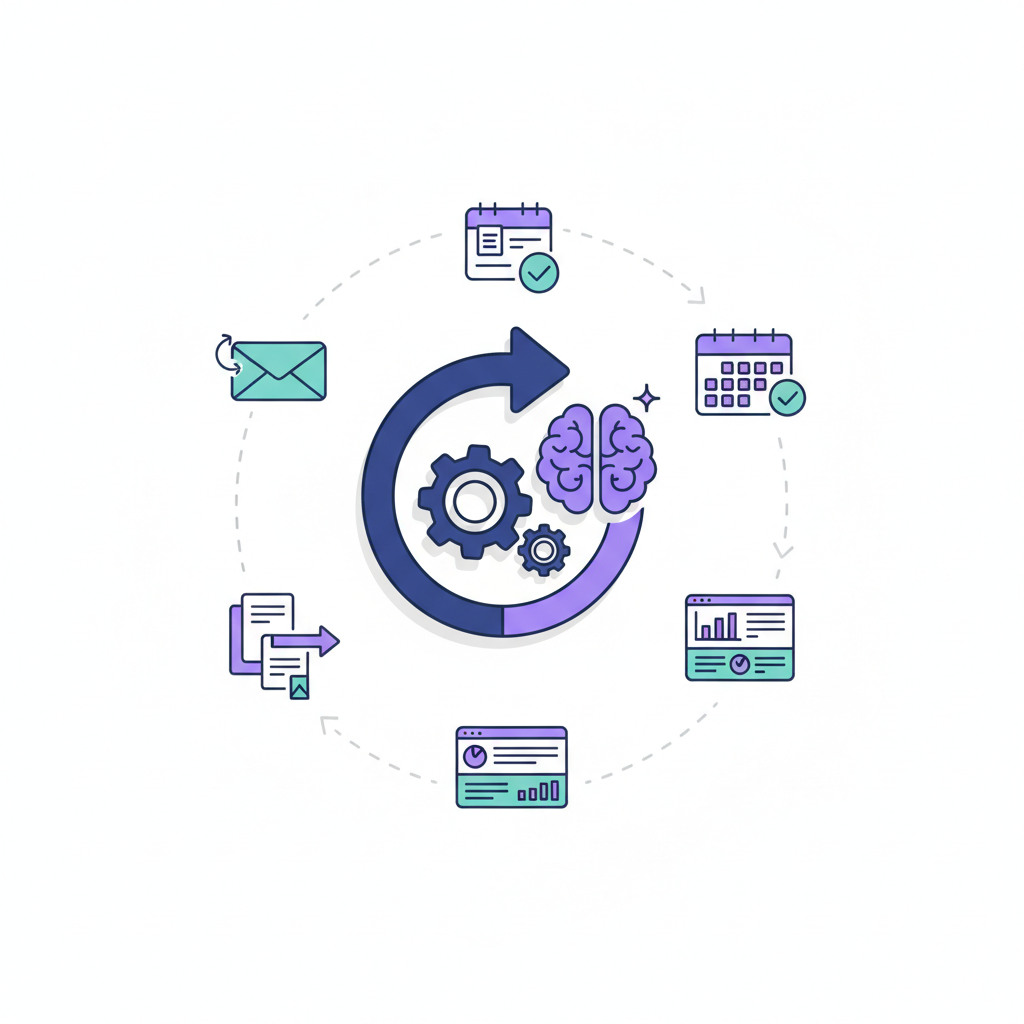Top 10 AI Tools for Webinar Creation & Hosting
Explore the top 10 AI tools for webinar creation and hosting in 2025, including Jasper, Tome, Descript, eWebinar, and more. Learn how AI automates scripting, engagement, transcription, analytics, and repurposing for efficient, impactful webinars.

The landscape of modern communication is constantly evolving, and webinars have firmly established themselves as an indispensable tool for businesses, educators, and thought leaders alike. They offer a dynamic way to connect with audiences, share knowledge, and generate leads. However, the journey from concept to a successful, engaging, and impactful webinar is often fraught with challenges. Time constraints, resource limitations, and the constant struggle to maintain audience engagement can make even seasoned presenters feel overwhelmed. This is where the transformative power of Artificial Intelligence steps in. AI is not just a buzzword; it's a revolutionary force that is fundamentally changing how we approach webinar creation and webinar hosting. This article will delve into the best AI tools for webinars, exploring how they address common pain points and elevate the entire webinar experience. You might wonder, "Can AI create a webinar?" The answer is a resounding yes, by assisting in virtually every aspect, from content generation to post-event analysis.
Why AI is a Game-Changer for Your Webinars
AI tools to enhance webinars are rapidly becoming non-negotiable for anyone serious about digital engagement. The benefits extend far beyond simple automation, touching every facet of the webinar lifecycle. Firstly, AI brings unparalleled efficiency and automation, streamlining repetitive tasks such as scripting, scheduling, and promotional outreach, freeing up valuable human capital for more strategic endeavors. Secondly, AI significantly enhances engagement. With AI-powered interactivity, personalization, and sophisticated audience understanding, webinars can become more dynamic and responsive, keeping attendees hooked from start to finish.
Moreover, AI facilitates broader reach and accessibility. Features like AI for translation, transcription, and intelligent content repurposing break down language barriers and make your content accessible to a global audience. Thirdly, AI provides data-driven insights through advanced analytics, offering a deeper understanding of audience behavior, engagement patterns, and conversion metrics, which are crucial for optimizing future webinars. This level of insight was previously difficult and time-consuming to obtain. Ultimately, integrating AI into your webinar software not only elevates the quality of your presentations but also increases their perceived value. By delivering a superior, more personalized, and highly professional experience, AI can indirectly help justify a higher charge for a 1-hour webinar, transforming it into a premium offering. The rise of automated webinars further underscores AI's role in making high-quality content scalable and consistently available.
AI Across the Webinar Lifecycle: Pre-Webinar, During, and Post-Webinar
The integration of AI for webinars spans the entire lifecycle of your event, transforming each stage from a labor-intensive process into an efficient, data-driven operation. From initial planning to post-event follow-up, AI for webinar creation and AI for webinar hosting offers unparalleled advantages, making your webinars more impactful and easier to manage.
Pre-Webinar: AI for Creation & Planning
Before your webinar even goes live, AI tools for webinar content creation can drastically reduce the effort and time involved in preparation. For content generation, AI excels at assisting with scripting, generating detailed outlines, and even drafting presentation slides. Tools can help with topic ideation, suggesting relevant and trending subjects based on your audience's interests and industry trends. This is a game-changer for overcoming writer's block and ensuring your content is always fresh and relevant.
Beyond the core content, AI is invaluable for crafting promotional copy. It can generate compelling email subject lines, body copy for invitations, engaging social media posts, and persuasive landing page content designed to maximize registrations. By analyzing successful past campaigns, AI can tailor messages to resonate with specific audience segments. For audience targeting and research, AI can analyze demographic data, past engagement, and online behavior to identify your ideal attendees, allowing you to tailor your content and promotional efforts precisely. This ensures you're reaching the right people with the right message. Furthermore, AI assistants can help with scheduling and logistics, coordinating speaker availability, setting up reminders, and even managing registration flows, reducing the administrative burden. The ability of AI to rapidly generate high-quality content and design elements helps overcome common design challenges, ensuring your webinar materials are professional and visually appealing. This comprehensive support in webinar creation ensures a strong foundation for success.
During Webinar: AI for Engagement & Delivery
Once your webinar is live, AI tools for engaging webinar audience become critical for maintaining attendee interest and ensuring a smooth, interactive experience. For live interaction, AI-powered Q&A moderation can sift through incoming questions, prioritize them based on relevance or popularity, and even suggest answers to common queries, allowing presenters to focus on complex discussions. Real-time polls and quizzes can be dynamically generated or suggested by AI based on the flow of the presentation, keeping attendees actively involved.
Accessibility features are significantly enhanced by AI. Live transcription services provide real-time captions, making your webinar accessible to hearing-impaired individuals. Multi-language translation capabilities can instantly translate spoken content into various languages, breaking down geographical and linguistic barriers and expanding your reach globally. This is particularly beneficial for live webinars with diverse international audiences. AI can also contribute to dynamic content delivery, potentially adapting the pace or depth of information based on real-time audience reactions or engagement levels, though this is an evolving area. Virtual assistants, powered by AI, can manage the chat box, answer frequently asked questions, and provide links to resources, freeing up human moderators to handle more nuanced interactions. These capabilities ensure that every attendee feels included and engaged, making your live webinars more impactful and inclusive.
Post-Webinar: AI for Analysis & Repurposing
The value of a webinar doesn't end when the broadcast does; AI tools for automated webinars extend their utility into the post-event phase, maximizing your return on investment. For performance analytics, AI can interpret complex engagement metrics, attendee feedback, and conversion rates with remarkable precision. It can identify peak engagement times, drop-off points, and the most popular content segments, providing data-driven insights that are invaluable for optimizing future events.
Automated summary generation is another powerful AI application. AI can quickly create highlights, key takeaways, and meeting minutes from the webinar transcript, saving hours of manual work. This makes it easier to share essential information with attendees and those who couldn't make it. Perhaps one of the most impactful uses of AI post-webinar is content repurposing. AI can transform webinar recordings into a multitude of valuable assets: transcribing the audio into blog posts, extracting short, engaging snippets for social media, converting the audio into podcast episodes, or even generating short video clips for promotional use. This extends the content's shelf-life and broadens its reach across different platforms and formats. Finally, AI can power follow-up automation, creating personalized email sequences based on individual attendee behavior – for example, sending specific resources to those who engaged with a particular poll or visited a certain link. These webinar tools ensure that every piece of content is leveraged to its fullest potential, providing deep data-driven insights and maximizing the impact of your efforts.
Top 10 AI Tools for Webinar Creation & Hosting
Selecting the right AI tools for webinars can be transformative. Our selection criteria focused on versatility, ease of use, and the measurable impact each tool can have on your webinar creation and hosting processes. Here are the 10 best AI tools for webinars that stand out in the current market, offering solutions across the entire webinar lifecycle.
Tool 1: Jasper (AI Scripting/Content Generator)
Jasper is a leading AI writing assistant that excels at generating high-quality content for various purposes. For webinars, it's invaluable for scripting entire presentations, creating detailed outlines, and drafting compelling promotional copy for emails, social media, and landing pages. Its ability to adapt to different tones and styles makes it versatile for diverse webinar topics and audiences.
Best For: Content marketers, educators, and businesses needing rapid, high-quality text generation for all webinar-related materials.
Pros: Excellent content quality, wide range of templates, integrates with other tools.
Cons: Can be pricey, requires human editing for factual accuracy and nuance.
Tool 2: Tome (AI Presentation Creator)
Tome is an AI-powered presentation tool that helps users create visually stunning and engaging presentations with minimal effort. It can generate entire slide decks from a simple text prompt, suggesting layouts, images, and even content structure. This tool significantly speeds up the design process, ensuring your webinar slides are professional and captivating.
Best For: Presenters who want to create professional-looking slides quickly without extensive design skills.
Pros: Intuitive interface, strong visual design capabilities, fast generation.
Cons: Less control over intricate design details compared to manual tools, may require fine-tuning.
Tool 3: Descript (AI Video Editor)
Descript revolutionizes video and audio editing by treating media like a document. It automatically transcribes your webinar recordings, allowing you to edit the video by simply editing the text. Its AI features include removing filler words, generating voiceovers with AI voices, and creating short, shareable clips for repurposing.
Best For: Anyone needing to edit webinar recordings, create highlight reels, or repurpose content into various video formats efficiently.
Pros: Text-based editing is revolutionary, excellent transcription, AI voice cloning.
Cons: Can be resource-intensive, learning curve for advanced features.
Tool 4: eWebinar (AI-Powered Webinar Platform)
eWebinar is a robust platform designed specifically for automated webinars, offering a unique blend of live interaction and on-demand flexibility. It allows you to pre-record your presentation and then automate interactive elements like polls, Q&As, and calls to action. Its AI features help manage chat and provide automated responses, ensuring engagement even without a live presenter.
Best For: Businesses looking to scale their webinar efforts with evergreen content that still feels interactive and personalized.
Pros: High level of automation, excellent engagement features, flexible scheduling.
Cons: Primarily for pre-recorded webinars, less suitable for purely live, spontaneous events.
Tool 5: ManyChat (with AI) (AI Q&A/Chatbot)
While primarily a chatbot platform, ManyChat's integration with AI allows it to serve as a powerful tool for managing live Q&A and providing automated responses during webinars. You can program it to answer common questions, qualify leads, and direct attendees to relevant resources, freeing up your team to handle more complex inquiries.
Best For: Enhancing live webinar interaction, automating customer support during events, and lead qualification.
Pros: Easy to set up, integrates with popular messaging apps, improves response times.
Cons: Requires careful programming, may lack the nuance of human interaction for complex questions.
Tool 6: Otter.ai (AI Transcription & Translation)
Otter.ai is an intelligent meeting assistant that provides real-time transcription of spoken conversations. For webinars, this means instant captions, making your content more accessible. Post-webinar, it generates searchable transcripts and summaries, which are invaluable for content repurposing and review. It also offers translation features to broaden your audience reach.
Best For: Improving accessibility, generating accurate transcripts for repurposing, and quickly summarizing key discussion points.
Pros: Highly accurate transcription, real-time capabilities, easy sharing.
Cons: Free tier has limitations, accuracy can vary with poor audio quality.
Tool 7: Google Analytics (with AI insights) (AI Analytics & Reporting)
While not exclusively a webinar tool, Google Analytics, with its increasingly sophisticated AI-powered insights, is crucial for understanding the broader impact of your webinar marketing efforts. It can help analyze traffic sources, user behavior on landing pages, and conversion paths related to your webinars, providing data-driven insights into your audience and ROI.
Best For: Marketers and businesses needing deep insights into webinar promotion effectiveness, audience acquisition, and conversion tracking.
Pros: Comprehensive web analytics, powerful AI-driven insights, integrates with other Google services.
Cons: Can be complex for beginners, requires proper setup for accurate tracking.
Tool 8: Slido (with AI features) (AI for Audience Engagement)
Slido is a popular audience interaction platform that now incorporates AI to enhance its offerings. It facilitates live polls, Q&A sessions, and quizzes, making webinars more interactive. AI can help moderate questions, identify trending topics, and even suggest relevant polls based on the presentation content, ensuring dynamic engagement.
Best For: Boosting live audience participation, gathering real-time feedback, and making webinars more interactive.
Pros: User-friendly, excellent for live engagement, integrates with many webinar platforms.
Cons: Some advanced AI features are still developing, can be costly for large events.
Tool 9: HubSpot AI (AI for Marketing & Promotion)
HubSpot's suite of marketing tools now includes powerful AI capabilities that are highly beneficial for webinar promotion. Its AI can generate compelling email subject lines, craft effective ad copy, and segment your audience for highly targeted campaigns. This ensures your promotional efforts are optimized for maximum registration and attendance.
Best For: Marketing teams looking to streamline and optimize their webinar promotion and lead nurturing strategies.
Pros: Comprehensive marketing platform, strong AI content generation, excellent CRM integration.
Cons: Can be expensive for small businesses, requires familiarity with the HubSpot ecosystem.
Tool 10: Synthesia (AI Virtual Presenter/Avatar)
Synthesia allows you to create professional videos with AI-generated virtual presenters or avatars. You simply type in your script, choose an avatar, and the AI generates a video of the avatar speaking your text. This is ideal for creating pre-recorded webinar introductions, summaries, or even entire automated presentations without needing a human presenter on camera.
Best For: Creating high-quality, scalable video content for webinars, especially for intros, outros, or fully automated segments.
Pros: Professional-looking videos, saves time and resources on filming, wide range of avatars and languages.
Cons: Lacks the authentic human connection of a live presenter, can be costly.
Choosing the Right AI Tool for Your Webinar Needs
Navigating the vast array of AI tools for webinars can be daunting, but making the right choice is crucial for maximizing your investment. The first step is to clearly define your goals. What specific problems are you trying to solve? Are you aiming for greater efficiency in content creation, enhanced audience engagement during live sessions, broader reach through accessibility features, or deeper data-driven insights post-event? Your primary objective will dictate which webinar software or specialized tool is most suitable.
Next, consider integration capabilities. How well does the AI tool fit with your existing webinar platform and overall tech stack? Seamless integration prevents workflow disruptions and ensures data flows smoothly between systems. Ease of use and the learning curve are also vital factors; choose tools that your team can quickly adopt without extensive training. Cost considerations are always a factor, so evaluate pricing models (subscription, per-use) and assess the potential ROI. Finally, think about scalability. Can the tool grow with your webinar program as your needs evolve? By carefully weighing these factors, you can select the best webinar tools that truly empower your strategy.
Challenges, Limitations & The Future of AI in Webinars
While AI offers immense potential for webinar hosting and creation, it's important to acknowledge its current challenges and limitations. Over-reliance on AI can sometimes lead to a loss of the crucial human touch, making webinars feel impersonal. Maintaining authenticity and emotional intelligence, which are core to engaging presentations, remains a human domain. Data privacy concerns are also paramount, as AI tools often process sensitive information. Furthermore, the initial setup complexity and integration with existing systems can present a learning curve.
Currently, AI still lacks true creativity and the nuanced emotional intelligence that human presenters bring. It can generate content, but the strategic vision, empathy, and spontaneous wit often come from human insight. However, the future of AI in webinars is incredibly promising. We can anticipate hyper-personalization, where content and interactions are dynamically tailored to individual attendees in real-time. Advanced virtual assistants will become even more sophisticated, handling complex queries and managing intricate logistics. Immersive VR/AR webinars could offer truly transformative experiences. Ethical AI development will be key to ensuring these advancements are used responsibly. Ultimately, AI for webinar hosting will continue to evolve, making webinars more accessible, impactful, and efficient than ever before.
Embrace the AI Revolution for Your Next Webinar
The journey through the world of AI tools for webinars reveals a landscape brimming with innovation and opportunity. We've seen how AI can revolutionize every stage of the webinar lifecycle, from streamlining content creation and planning to enhancing live engagement and providing invaluable post-event analysis. The transformative power of AI is undeniable, offering solutions to long-standing challenges in efficiency, audience reach, and data interpretation.
It's crucial to understand that AI is not here to replace human ingenuity but to empower it. By offloading repetitive tasks and providing intelligent assistance, the best AI tools for webinars enable presenters and organizers to focus on what truly matters: crafting compelling narratives, fostering genuine connections, and delivering exceptional value. We encourage you to explore the listed tools, experiment with their capabilities, and start integrating AI into your webinar strategy. The future of webinars is intelligent, engaging, and efficient, and it's a future you can embrace today.
Frequently Asked Questions About AI in Webinars
Q: Can AI create a webinar from scratch?
A: While AI can generate scripts, presentation slides, promotional copy, and even virtual presenters, human oversight is crucial. AI excels at assisting with content generation and automation, but strategic direction, authentic storytelling, and emotional connection still require human input to ensure a truly impactful and authentic webinar experience.
Q: What is the best platform for hosting a webinar with AI features?
A: The "best" webinar platforms depend on your specific needs. Many traditional platforms are rapidly integrating AI features. Look for those offering AI-powered engagement tools (like live polls and Q&A moderation), advanced analytics, and automation capabilities (e.g., eWebinar for automated webinars, or Livestorm with its growing AI integrations). Evaluate based on your budget, audience size, and desired level of interactivity.
Q: Are AI-generated webinars less engaging?
A: Not necessarily. While a fully AI-generated webinar might lack some human spontaneity, AI tools for webinars can actually enhance engagement. They can personalize content delivery, facilitate real-time interactive elements like polls and quizzes, and provide accessibility features such as live captions and multi-language translation. This frees up human presenters to focus on deeper connection and interaction, potentially making the overall experience more engaging.
Q: How much do AI webinar tools cost?
A: The cost of AI webinar tools varies widely. Many offer free tiers with limited features, while premium subscriptions can range from tens to hundreds of dollars per month, or even more for enterprise solutions. Pricing often depends on the breadth of features, usage limits (e.g., number of attendees, minutes of transcription), and integration capabilities. It's advisable to utilize free trials to assess value before committing.
Featured Tools

10Web is an AI-powered WordPress platform that offers automated website building, hosting, and optimization with AI assistance for content and image generation.

A global creative platform connecting businesses with freelance designers for custom graphic design projects.

A1.art is an AI art generator that transforms text descriptions into unique digital artworks across various styles.

Acquire.io is a customer engagement platform offering live chat, AI chatbots, co-browsing, and video chat to enhance customer support and sales.

A customer experience automation platform combining email marketing, marketing automation, and CRM with AI-powered personalization.
Top AI Categories
Related Articles

AI for financial services: compliance & automation
Discover how AI is revolutionizing financial services through advanced compliance automation, real-time fraud detection, regulatory reporting, and hyper-personalized customer experiences. Explore the future of intelligent, efficient, and secure banking.

How SMBs can adopt AI without big spending
Discover how small and medium businesses can adopt AI affordably. This practical guide covers low-cost tools, quick wins, real-world examples, and step-by-step strategies to integrate AI without breaking the bank.

Top 10 AI tools for Enterprise Workflow Automation
Enterprises are turning to AI-powered workflow automation to eliminate manual processes, cut costs, and accelerate strategic execution. Unlike traditional automation, AI can handle unstructured data and make intelligent decisions, offering profound benefits across finance, HR, and IT. This guide curates the top 10 AI tools—from RPA leaders like UiPath and Automation Anywhere to iPaaS solutions like Workato and low-code platforms like Microsoft Power Automate—providing a blueprint for building a more agile and resilient organization.